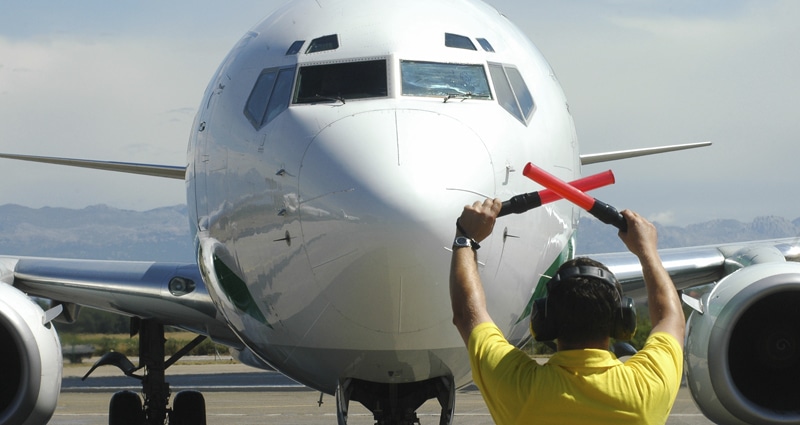Everybody Contributes to SMS And Everyone in the Organization Benefits

Aviation departments that exclusively focus their safety program on pilots are not optimizing the potential of their other employees. A mature Safety Management System (SMS) requires all of an organization’s personnel to be properly educated about the safety system and to be actively involved in identifying hazards and reducing risks.
Educating everyone about the safety system reinforces the recognition of team members’ professionalism. It also helps the system evolve over time and incrementally improve, making full participation and complete transparency part of the organization’s culture.
As I visit aviation departments around the country, I still see many that focus their safety programs on the pilots. In some cases, maintenance technicians, dispatchers, line support technicians and office staff seem to have only a distant connection to the safety improvement effort. When these departments focus their safety programs only on the pilots, they are not optimizing their potential.
Historically, pilots have always been put on the highest pedestal, afforded the best training, monitored for fatigue and monitored for wellness. Pilots are often the first to be consulted on procedural changes and are offered opportunities for input. Others in the organization may be perceived as being one or more rungs lower on the organizational ladder. This unofficial caste system tends to break lines of communication. Stories of rifts between pilots and mechanics are legendary in the industry.
One of the beneficial attributes of a mature Safety Management System (SMS) is that it encourages—in fact, requires—all of an organization’s personnel to be educated about the safety system and to be actively involved in identifying hazards and reducing risks. Moreover, a solid SMS makes it possible for everyone to participate in the evaluation and review of operational standards, opens up organizational lines of communication and encourages honest discussions about safety.
An effective SMS is built on trust. Team members have to be confident that when they voluntarily report a hazard or incident, even if that incident is the result of a lapse in judgment or an honest error, it won’t result in disciplinary action. That is the basis of a “Just Culture.” No SMS works effectively without a fundamental and solid Just Culture as a beginning point. Learn more about Just Culture.
Including all team members in the safety system process reinforces recognition of their professionalism. That extends to all aspects of each individual’s role in the operation, including appropriate authority for decision making. Aviation departments that have realized the truth in that statement have extended the fundamentals of safety management—professionalism, training, fatigue management, relationships—throughout the organization.
Developing the professionalism of all employees is well-documented as an industry standard within the structure defined by the International Standard for Business Aircraft Operations (IS-BAO.) Under those guidelines all personnel involved with aircraft operations are encouraged to meet high standards of training, performance, wellness, rest and readiness. Open communication within an organization is encouraged through the use of safety reporting forms, internal audits, committee activity, and other SMS resources.
When the entire aviation staff contributes, flight risk assessments, technical risk assessments and hazard reporting increase. All employees participate in the internal audit process. People begin to communicate in a new safety language. Over time, the system evolves and incrementally improves. Full participation and complete transparency become part of the organization’s culture.
Aviation departments that have undergone this transformation have acknowledged the improvements that result from having a more respectful, participatory working environment. Almost universally, flight organizations that incorporate functioning safety management systems reap significant operational benefits. They are more efficient. They drop fewer flights, have better employee retention rates, stronger relationships with senior management and, obviously, better safety records.
If you are still on the fence about the SMS concept and if you are skeptical of what you see as just another safety fad, remember what people said about CRM (Crew Resource Management) when it was introduced a generation ago. Think about it. SMS is a process that focuses the entire organization on performing the mission safely and efficiently. It is proven to work—for all sizes of flight departments. Do yourself a favor. Do just a little bit of research. Here are some great places to start.
Gain an understanding of some of the basic concepts revolving around SMS.
Download the FAA’s SMS Advisory Circular.
Learn more about the International Standard for Business Aviation Operations.
 Baldwin Safety & Compliance
Baldwin Safety & ComplianceCustomized Safety Management programs developed by experienced and credentialed safety professionals include training, manual management and SMS implementation/software. Based on ICAO and other international standards and regulations, Baldwin’s programs support Business Aviation, Charter, FBO, Airport, Medical Transport and Regional Airlines by providing advanced software, an outstanding customer experience and our Commitment to Excellence.
http://www.baldwinsms.com/
© 2025 Baldwin Safety & Compliance. All Rights Reserved.
Next ArticleRelated Posts

Part 108: The Next Step in BVLOS Integration and Drone Innovation
As the drone industry awaits the Federal Aviation Administration’s (FAA) forthcoming Part 108 regulations, the landscape of Beyond Visual Line of Sight (BVLOS) operations stands on the brink of transformation. These anticipated rules aim to standardize BVLOS flights, enabling more complex and expansive drone missions across various sectors.

Giving the Hazard Log the Attention It Deserves
Safety risk profile. Hazard log. Hazard risk register. Whatever you call it internally, one thing is clear: It is a fundamental requirement in your safety management system.

